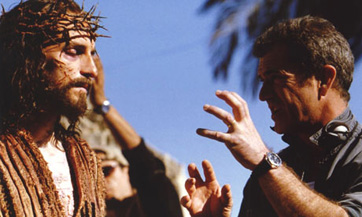What Went Right: The Passion of the Christ
By Shalimar Sahota
March 22, 2012
Reading the words, “And they crucified him,” lasts but a second, and we seldom take it in because we just carry on reading. Seeing this segment in The Passion of the Christ is another thing entirely. The film details the last 12 hours of Jesus Christ as explained in the Gospels of The New Testament, from being betrayed by his disciple Judas in the garden of Gethsemane, to his crucifixion.
Back in August 2002 came news that the devout Catholic Mel Gibson was planning to make a film about Jesus Christ, with some speculating that maybe Gibson intended to play the Messiah himself. A month later came the official announcement at a press conference in Rome, where Gibson revealed that he intended to direct a film about the last 12 hours of Jesus Christ and it was going to be entirely in Latin and Aramaic, with no subtitles. Upon hearing this, most were probably thinking, “Who’s going to see this?” With many believing that Gibson had lost his mind, he also revealed, “Nobody wants to touch something in two dead languages. They think I’m insane. And maybe I am.” On why he wanted to focus on Christ’s final hours, Gibson described it as “the most exciting place to go. It’s also the most painful, the most brutal, the most beautiful part of the whole thing.”
Before shooting, Gibson and producer Stephen McEveety started out by talking to studios and private investors. As expected, none of them wanted to take on the risk, fearing that they would lose their money. So Gibson financed it himself though his own production company Icon. It would eventually come in at a cost of $30 million.
Gibson co-wrote the screenplay with Benedict Fitzgerald, and even he was initially baffled as to why Gibson wanted to do it in a dead language. Compared to previous Biblical epics, instead of going with English spoken in American accents, the decision to use Aramaic and Latin added a level of authenticity to the film. William J. Fulco was credited with translating, and even declared that being a dead language the Aramaic in the film is not perfect. Still, for the audience that largely doesn’t know any better, from watching it you would think that the actors were fluent in it. Initially wanting to release the film without subtitles, Gibson’s decision to add them came during editing. Trying the film with them, he said, “I just found that it was better, because you’re almost forced to read the written word. It’s like an interesting exercise.”
Promoting The Passion of the Christ, involved setting up preview screenings and inviting religious leaders, hoping that they would enjoy the film and spread the word to their congregation. In some cases Gibson would visit evangelical pastors across the US, where he would screen and talk about the film. It was during the summer of 2003 when the controversy went into overdrive.
Since its release, Entertainment Weekly has ranked The Passion of the Christ as the most controversial film ever. One could argue that the controversy surrounding it managed to work in its favor and simply got people talking. Some were already opposed and offended by the film, even while it was still shooting, for the main issue drawing criticism was that it could be anti-Semitic, blaming the Jews for delivering Jesus to Pontius Pilate.
Continued:
1
2
3




